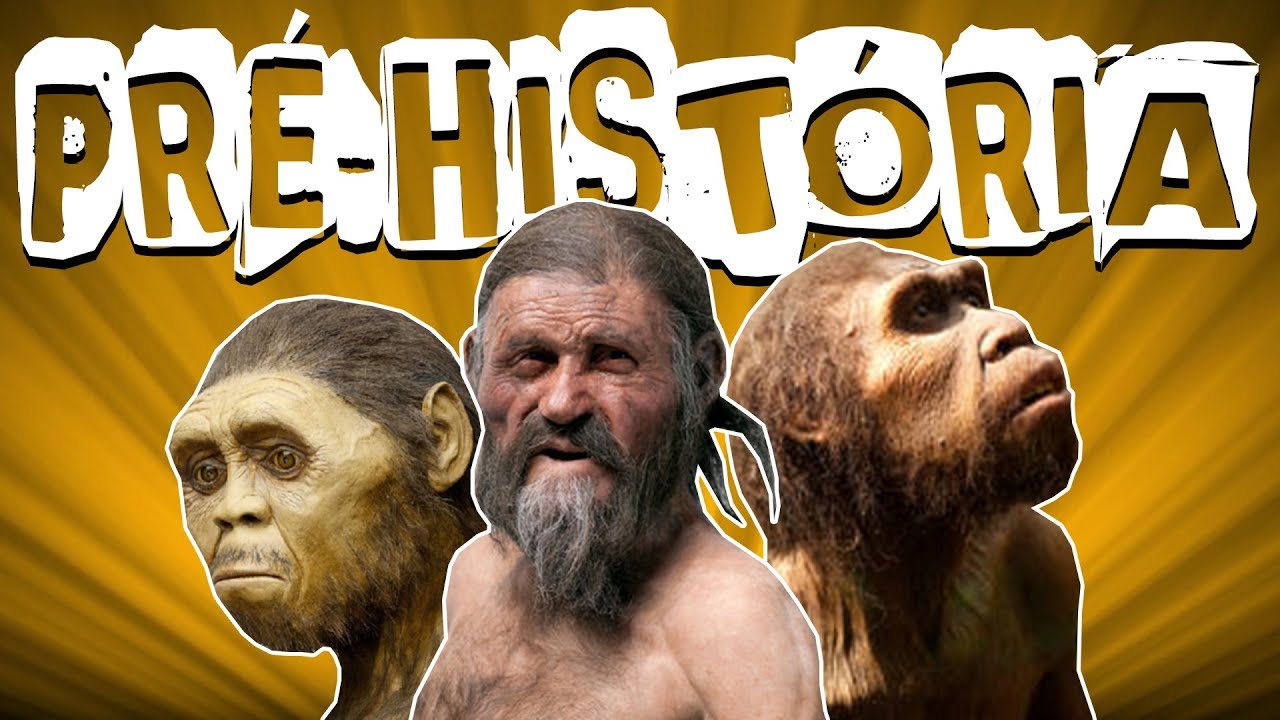Todo lo que tenes que saber sobre: EL PALEOLÍTICO - Historia
Summary
TLDRThis script delves into the Paleolithic era, spanning from the emergence of early hominid tools about three million years ago to the advent of agriculture around 12,000 years ago. It outlines the era's three phases: Lower, Middle, and Upper Paleolithic, detailing the evolution of tool-making techniques and the rise of Homo sapiens. The script paints a picture of daily life, from hunting and gathering to the mastery of fire, and touches on societal structures and the development of art. It concludes by highlighting the challenges faced by these early humans, such as the cold and the perils of the night.
Takeaways
- 🪨 The term 'Paleolithic' comes from the Greek words 'palaios' (ancient) and 'lithos' (stone), meaning 'old stone'.
- ⛏️ The Paleolithic period spans from the first creation of stone tools by hominids about 3 million years ago to around 12,000 years ago when agriculture started.
- 🔨 The Paleolithic is divided into three stages: Lower, Middle, and Upper, based on tool development and human evolution.
- 🦴 The Lower Paleolithic (2.5 million years ago to 125,000 years ago) saw the creation of the first stone tools and the emergence of several Homo species.
- 🧊 The Middle Paleolithic (125,000 to 40,000 years ago) featured the Neanderthals and the Mousterian culture, marked by improved stone tool craftsmanship.
- 🧠 The Upper Paleolithic (40,000 to 10,000 years ago) marked the dominance of Homo sapiens, the extinction of other human species, and further advancements in tool-making.
- 🌿 Early humans were mainly gatherers, relying on fruits and plants before they began hunting larger animals as their tools and skills improved.
- 🔥 Mastery of fire by Homo erectus during the Lower Paleolithic provided warmth and protection, as well as improved food preparation.
- 🎨 Paleolithic art, particularly in the Upper Paleolithic, reflects cultural and symbolic development, with evidence of cave paintings and carved objects.
- 🏞️ Paleolithic societies were small, egalitarian groups of hunter-gatherers, and they didn't have hierarchical leadership or war as seen in later civilizations.
Q & A
What is the Paleolithic period, and where does the term come from?
-The Paleolithic period is the era when the first hominids began creating tools, starting around 3 million years ago until about 12,000 years ago. The term comes from the Greek words 'palaios,' meaning 'old,' and 'lithos,' meaning 'stone,' so it translates to 'Old Stone Age.'
How is the Paleolithic period divided?
-The Paleolithic period is divided into three stages: the Lower Paleolithic (about 2.5 million years ago to 125,000 years ago), the Middle Paleolithic (125,000 to 40,000 years ago), and the Upper Paleolithic (40,000 to 12,000 years ago). Each stage marks advancements in tool-making and human development.
What were the primary survival strategies during the Paleolithic?
-During the Paleolithic, survival strategies centered around hunting and gathering. Early humans primarily gathered fruits and vegetables and scavenged animals, later developing hunting techniques and even fishing as they advanced.
What advancements in tools were made during the Paleolithic?
-Tool-making evolved from basic stone cutting in the Lower Paleolithic to more refined techniques in the Middle and Upper Paleolithic. For example, early methods like Mode 1 (chopping tools) gave way to Mode 3 (Mousterian tools) and Mode 4, which involved finer blades and the production of spears and needles.
What were the living conditions like for humans during the Paleolithic?
-Paleolithic humans lived in small groups of hunter-gatherers, with no division of labor based on sex. Both men and women hunted and gathered. They often lived in caves or basic shelters and faced challenges like cold temperatures and dangerous nocturnal predators.
What role did the control of fire play in the Paleolithic?
-The control of fire, first achieved by Homo erectus during the Lower Paleolithic, was crucial for warmth, protection from predators, and cooking food. It allowed humans to survive colder climates and thrive in various environments.
How did art and culture develop during the Paleolithic?
-Art and culture, especially during the Upper Paleolithic, developed with cave paintings, carvings, and possibly early forms of spirituality or ritual. There is evidence of symbolic behavior, such as burial rites and the worship of animals like cave bears.
How did the climate influence human life during the Paleolithic?
-The Paleolithic period experienced extreme climate changes, including glaciations and warmer interglacial periods. These shifts affected the availability of resources, hunting strategies, and the movement of human populations.
How were Paleolithic societies structured, and did they have leaders?
-Paleolithic societies were small, egalitarian groups with no formal leaders. Each individual was self-sufficient, capable of hunting, gathering, and making tools. There were no wars since organized states had not yet emerged.
What was the significance of the Homo sapiens during the Upper Paleolithic?
-Homo sapiens appeared during the Upper Paleolithic and eventually replaced all other hominid species due to their advanced cognitive abilities, tool-making, and adaptability. This marked a significant turning point in human evolution.
Outlines

Esta sección está disponible solo para usuarios con suscripción. Por favor, mejora tu plan para acceder a esta parte.
Mejorar ahoraMindmap

Esta sección está disponible solo para usuarios con suscripción. Por favor, mejora tu plan para acceder a esta parte.
Mejorar ahoraKeywords

Esta sección está disponible solo para usuarios con suscripción. Por favor, mejora tu plan para acceder a esta parte.
Mejorar ahoraHighlights

Esta sección está disponible solo para usuarios con suscripción. Por favor, mejora tu plan para acceder a esta parte.
Mejorar ahoraTranscripts

Esta sección está disponible solo para usuarios con suscripción. Por favor, mejora tu plan para acceder a esta parte.
Mejorar ahora5.0 / 5 (0 votes)






